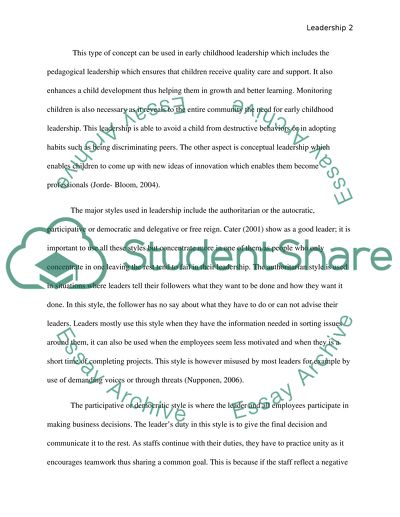Cite this document
(“Leadership in early childhood Essay Example | Topics and Well Written Essays - 2500 words”, n.d.)
Retrieved from https://studentshare.org/miscellaneous/1568580-leadership-in-early-childhood
Retrieved from https://studentshare.org/miscellaneous/1568580-leadership-in-early-childhood
(Leadership in Early Childhood Essay Example | Topics and Well Written Essays - 2500 Words)
https://studentshare.org/miscellaneous/1568580-leadership-in-early-childhood.
https://studentshare.org/miscellaneous/1568580-leadership-in-early-childhood.
“Leadership in Early Childhood Essay Example | Topics and Well Written Essays - 2500 Words”, n.d. https://studentshare.org/miscellaneous/1568580-leadership-in-early-childhood.


